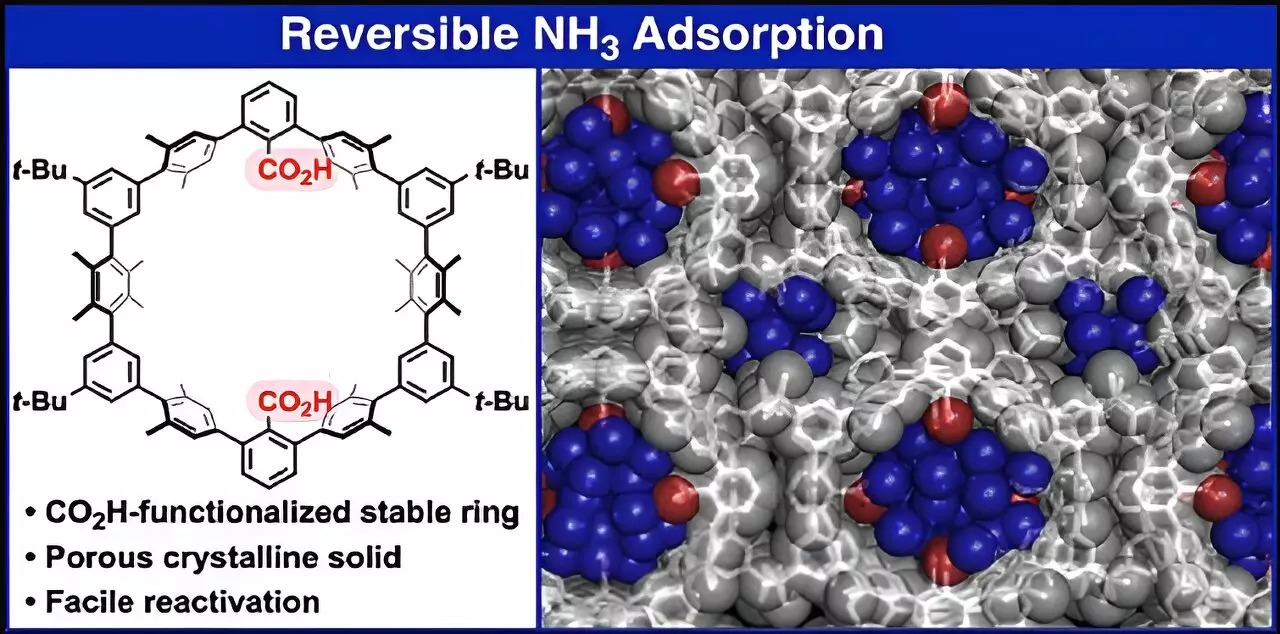As the urgency to combat climate change intensifies, the global search for sustainable energy solutions has never been more vital. One area garnering immense attention is the utilization of hydrogen as an energy source. While hydrogen fuel presents an alluring prospect for reducing our reliance on fossil fuels, significant technical barriers impede its widespread implementation. Chief among these challenges is the safe storage and transportation of hydrogen gas, which necessitates extreme pressure and cold temperatures. Amid these challenges, a groundbreaking innovation from researchers at the Tokyo Institute of Technology and the Tokyo University of Science provides a potential answer—using ammonia (NH3) as a viable alternative for hydrogen storage and transportation.
A Game-Changing Discovery
Under the leadership of Associate Professor Kosuke Ono, the research team has unveiled an advanced material known as 1a that demonstrates exceptional capabilities in ammonia adsorption and desorption. This crystalline structure not only allows for the efficient storage of ammonia but also releases it easily when required, thus addressing a significant limitation associated with traditional hydrogen storage methods. The discovery, published in the Journal of the American Chemical Society, sets the stage for transitioning to a more effective and practical energy system.
The essence of this innovation lies in the molecular design of the compound 1a. Composed of cyclic oligophenylenes with carboxylic acid (CO2H) functional groups, 1a organizes into a porous crystalline structure that enhances ammonia’s storage capacity. This novel formation offers a packing density of 0.533 g/cm³ at room temperature, nearly matching that of liquid ammonia, thereby demonstrating its remarkable potential for storing energy density comparable to hydrogen.
Ammonia: The Unsung Hero
What sets ammonia apart from hydrogen is its logistical advantage. Unlike hydrogen, which requires cumbersome high-pressure tanks and cryogenic systems for storage, ammonia can be transported and stored at much lower energy costs. The existing infrastructure for ammonia production and distribution can be readily adapted to accommodate new ammonia-based energy applications, simplifying the transition to sustainable energy practices. In a world where innovation is key to solving pressing energy dilemmas, this could spell a major shift in how we think about storage solutions.
Moreover, Ono emphasizes an environmental benefit of using ammonia as a hydrogen carrier: during combustion, ammonia produces nitrogen (N2) and water (H2O), without emitting harmful carbon dioxide (CO2). This quality firmly positions ammonia as a carbon-neutral alternative, which not only addresses energy storage but supports a more extensive ecological initiative of reducing greenhouse gas emissions.
Storage Stability and Efficiency
A significant hurdle in ammonia adsorption materials has always been their chemical stability during gas release cycles. However, with its robust crystalline nature, 1a emerges as a game-changer in solving this issue. The structural integrity of 1a allows for repeated use without the complication of unvented residual ammonia, which has plagued other materials. This resilience is particularly notable given that reducing the surrounding pressure alone can trigger nearly complete ammonia desorption.
Furthermore, the simplicity of 1a’s preparation enhances its attractiveness for commercial applications. By creating a material that is both effective and cost-efficient, the research team has laid the groundwork for scalable solutions that can be integrated into existing energy infrastructures.
Future Possibilities
Looking beyond ammonia, the adaptive nature of 1a hints at even broader applications in energy science. Researchers could potentially modify the CO2H functional groups to develop materials capable of adsorbing other reactive gases such as hydrogen chloride (HCl) or chlorine (Cl2). This adaptability not only positions 1a as a breakthrough in ammonia storage but also opens new avenues for tackling various chemical storage challenges faced in diverse industries today.
The ongoing development and refinement of next-generation energy technologies signal a pivotal step toward achieving a hydrogen economy. With compelling solutions emerging from innovative research, the transition from fossil fuels to sustainable energy sources is within reach. In this informative landscape of energy science, ammonia’s resurgence is nothing short of revolutionary.

